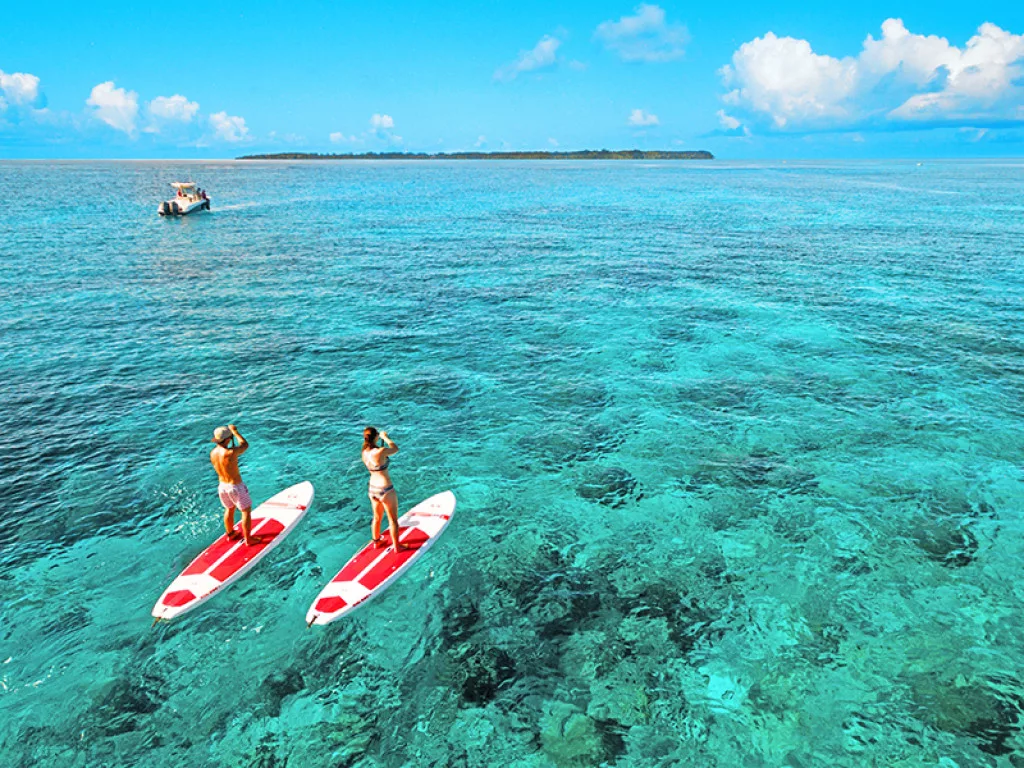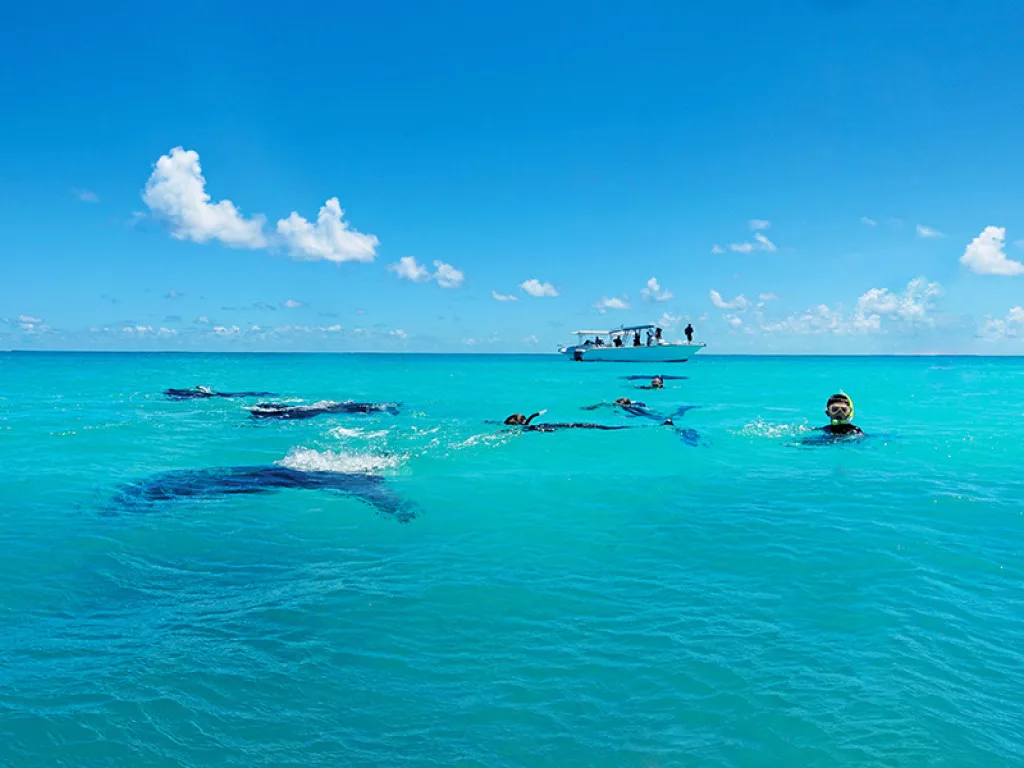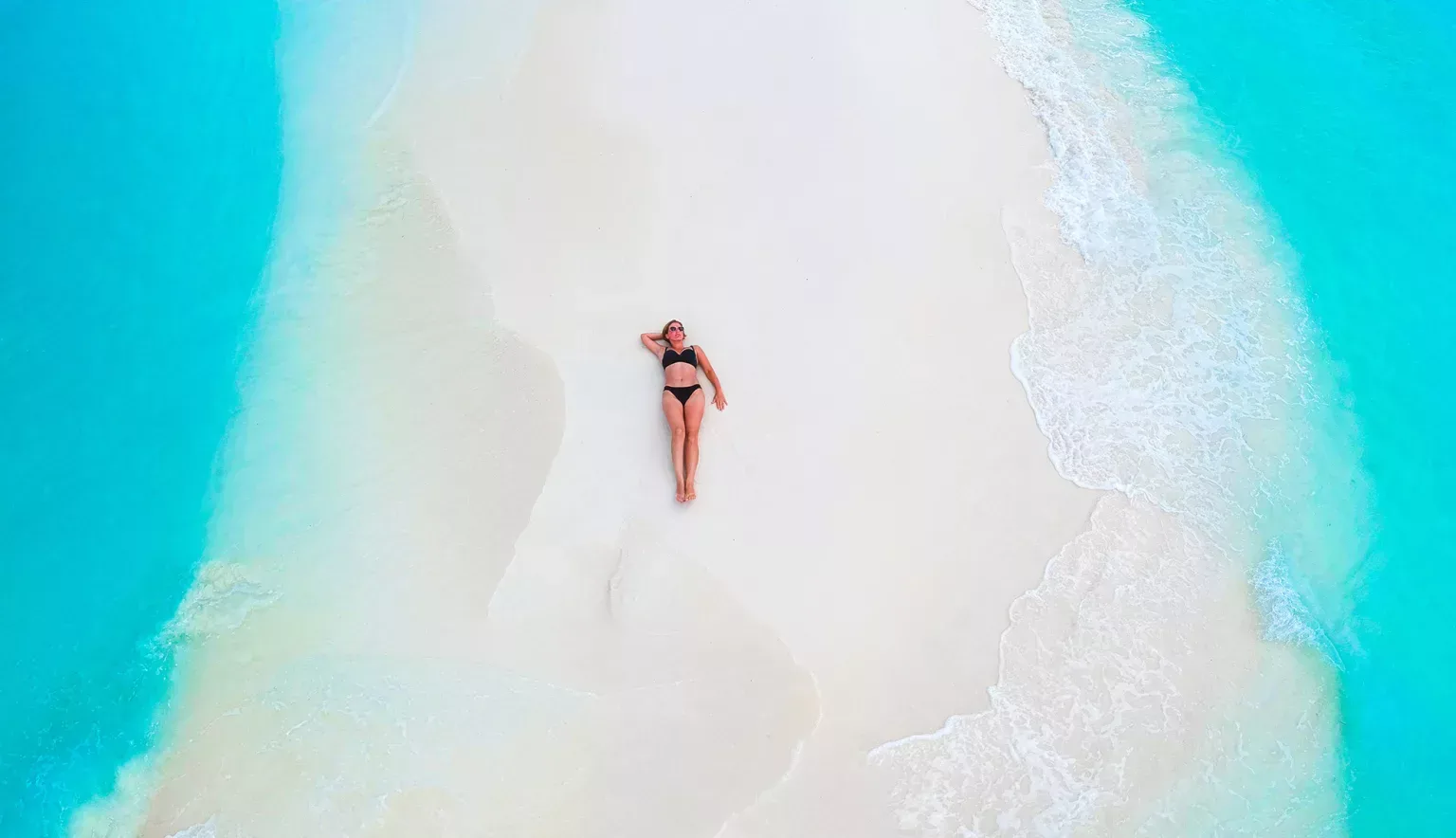With its vibrant Creole culture, astonishing biodiversity and breath-taking seascapes, island-hoppers prepare to set sail to the idyllic isles of the Seychelles.
SEYCHELLES
An island nation at the heart of the Indian Ocean, the Seychelles sit 1,000 miles off the East African coast. Although one of the world’s smallest countries, the Seychelles comprises an archipelago of 115 islands and atolls, from tiny outcrops of coral to vast hunks of granite. While this island republic is reputed as a white-sand haven for honeymooners and heliophiles, the Seychelles’ offerings extend far beyond its beaches.
Geographically, the Seychelles are split into two principal island groups. Ringed by a halo of coral atolls, the centrally-located Inner Island Group hosts the charismatic capital of Victoria on the most populous island of Mahé – gateway to the Seychelles. Rugged and granitic, these islands are distinguished by forested slopes of lush tropical jungle, enticing ribbons of coastline and a mountainous spine that reaches its pinnacle at Morne Seychellois – the Seychelles’ highest point at 2,969 feet. Nearby, unspoilt Praslin and La Digue are a short boat ride away, whilst the outer group of low-lying islands, flat and coralline, mostly sit vacant at just a few feet above sea level.
Situated four degrees south of the equator, the Seychelles are an ecological delight with diverse terrain ranging from high-altitude tropical forests dotted with hiking trails to thriving coastal mangroves. Varied plant life is a joy for botanists with an abundance of exotic plant species, including the government-protected coco de mer – a fruit treasured by Asian cultures as a natural aphrodisiac and retainer of mystical properties. Verdant rainforest disguises tiny tree frogs and tiger chameleons whilst native Sunbirds and Paradise Flycatchers dwell in the treetops above.
Warm waters will tempt scuba divers, where vast whale sharks and manta rays glide. In the shallows, thriving reef beds and long sea grasses make for fantastic snorkelling along the varied, shipwreck-laden seascapes of Mahé’s north coast. Over half of the Seychelles’ surface area is covered by marine and wildlife reserves, including the UNESCO-protected Aldabra Island where astonishing numbers of giant tortoises roam freely – just one of the many examples of the harmony that can exist between tourism and conservation.
With their icing-sugar shores and glass-like water, reputation precedes the Seychelle’s beaches. As the primary draw for travellers, first time visitors will soon realise after a stroll along the powder-like stretch of La Digue’s Grand Anse, that the hype is more than justified. A favourable oceanic climate prevails as the archipelago sits on the calm waters outside the Indian Ocean’s cyclone belt, with the southeast trade winds that have long bought visitors to these distant shores soothing the tropical humidity.
Settled by French colonists in the 18th century, the mother tongue of the Seychellois is Creole – a distinct vernacular that is prevalent along these colonised areas of the Atlantic and Indian Ocean. Rich French Creole cuisine will capture your taste buds, with ubiquitous, flavoursome fish curries attesting to the Seychelles’ heritage as a centre of the spice trade.
Despite the Castaway style scenery, a touch of luxury is never far at hand in the Seychelles.
The Seychelles: Facts and Figures
Population – 98,462
Capital – Victoria
Language – Creole, English, French
Currency – Seychelles rupee (SCR)
Time Zone – UTC +4
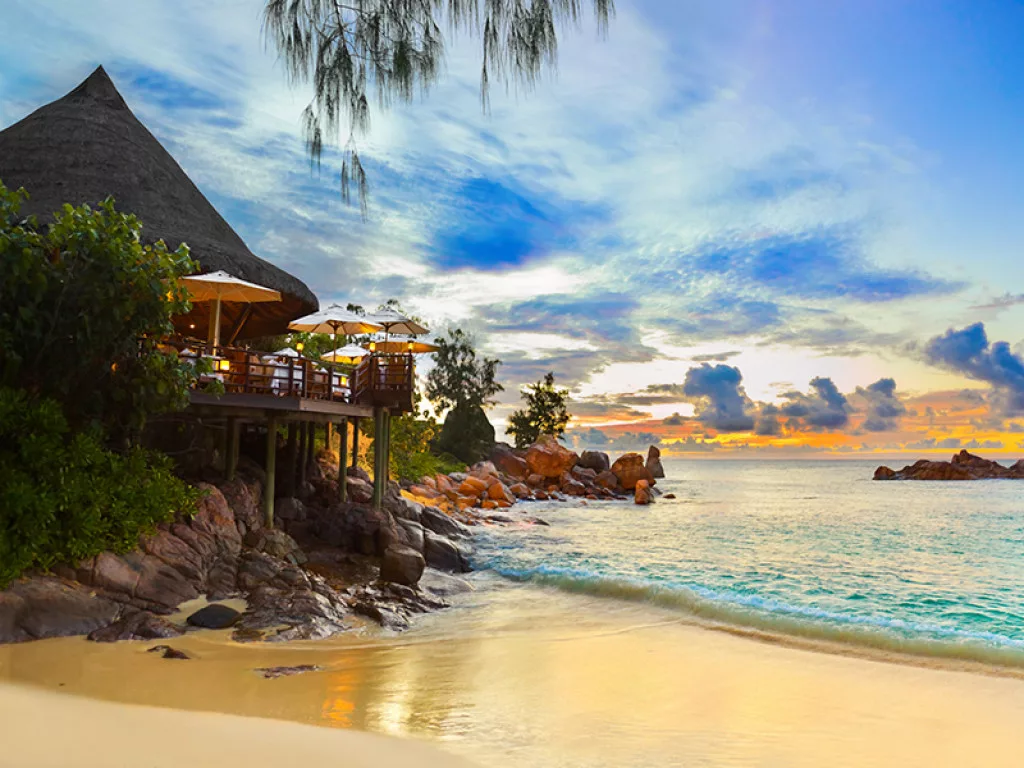
TOURISM INSIGHTS: SEYCHELLES TOURISM BOARD
Established in 2005, the Seychelles Tourism Board (STB) are the public/private sector body responsible for the promotion of the Seychelles as a tourist destination of choice.
Following on from our initial interview with the Tourism Board in Issue One, we check back in with CEO, Sherin Francis to see how the organisation, and indeed the Seychelles, are coping in the wake of the pandemic.
Q&A WITH SHERIN FRANCIS, CEO, SEYCHELLES TOURISM BOARD
How has COVID-19 affected the tourism industry in the Seychelles, and how are you helping local businesses recover?
Sherin Francis (SF): Over the past year, Covid-19 has prompted a heavy downward trend in tourism arrivals. In spite of this, we continue to be proactive. We participate with our tourism partners, both at home and abroad, to keep the Seychelles at the forefront of people’s minds.
We do this through a number of social media campaigns, such as ‘Experience Seychelles: Our Home, Your Sanctuary.’ We also keep in close contact with all of our stakeholders, as well as facilitating a link between our partners via zoom conference calls, virtual marketing meetings, virtual roadshows and trade fairs. This is done to both maintain and build new relationships, whilst keeping everyone abreast of what is happening.
The Seychelles has been one of the first holiday destinations to reopen to tourists without a vaccine requirement. Could you tell us your thoughts on this and how you think this will affect tourism for the islands?
SF: This has been a bold but carefully considered move to relaunch our tourism industry – given the fact that at the time of writing, well over 53 percent of our targeted population have already been vaccinated and 91 percent have already taken their first dose. This has created the necessary degree of herd immunity.
This immunisation campaign is being complimented by proof of a negative COVID-19 PCR test taken by travellers 72 hours before travelling to the Seychelles. Within the destination itself, we are maintaining the necessary sanitary measures, including the mandatory wearing of face masks in public areas, social distancing and constant hand hygiene.
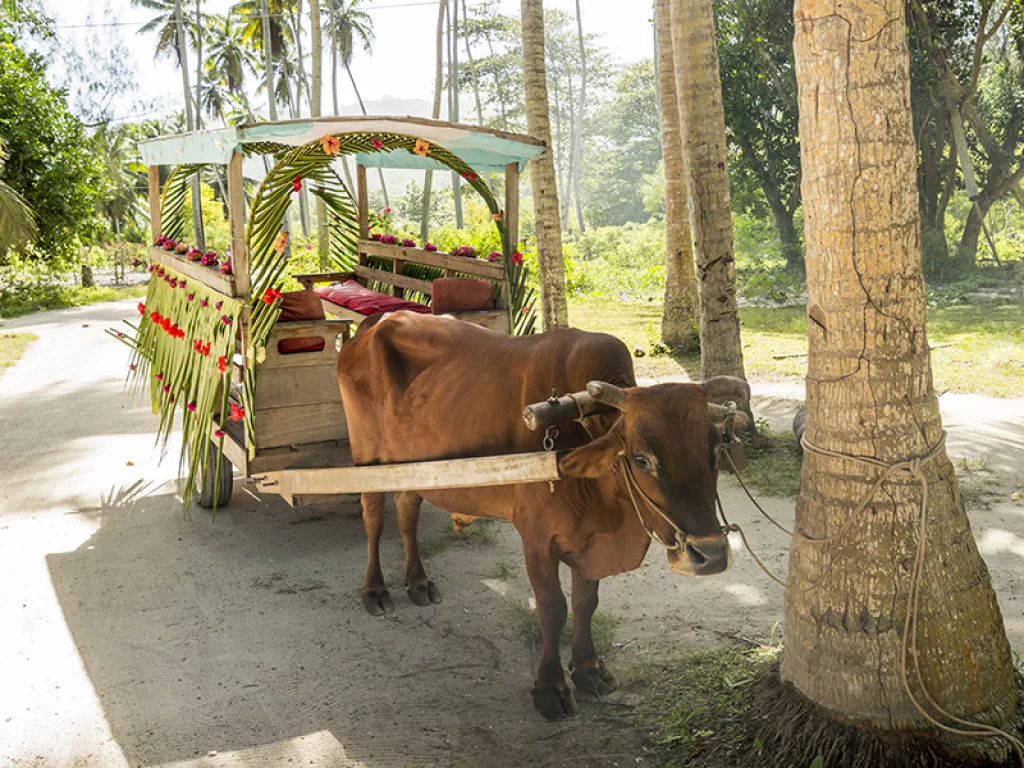
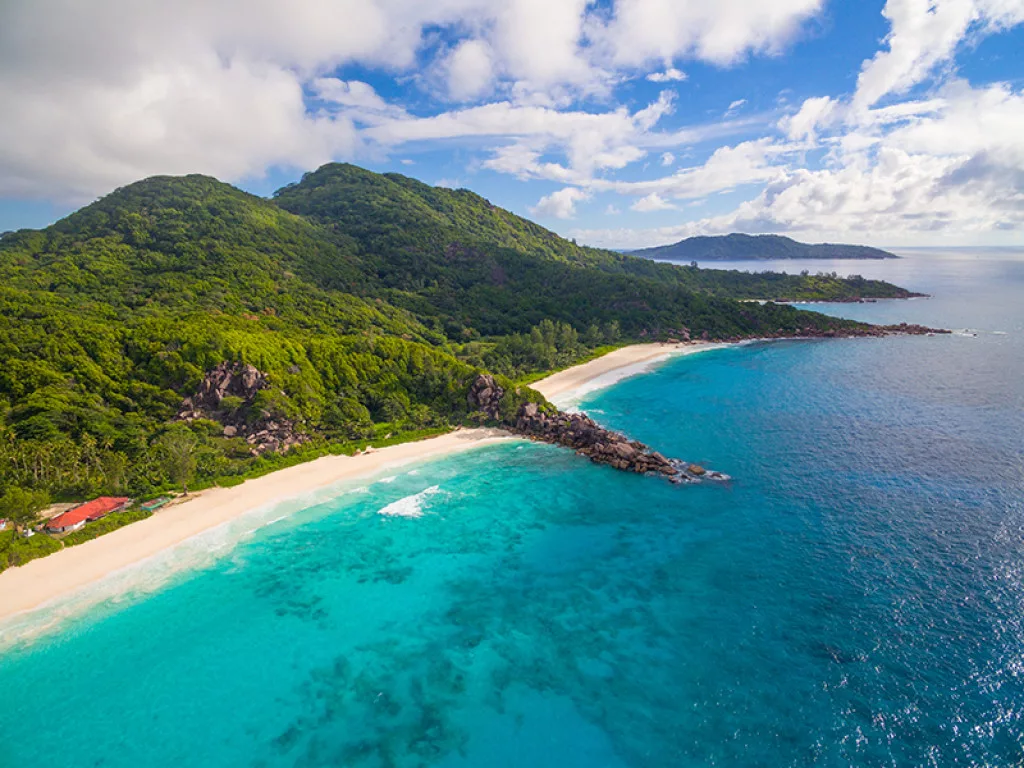
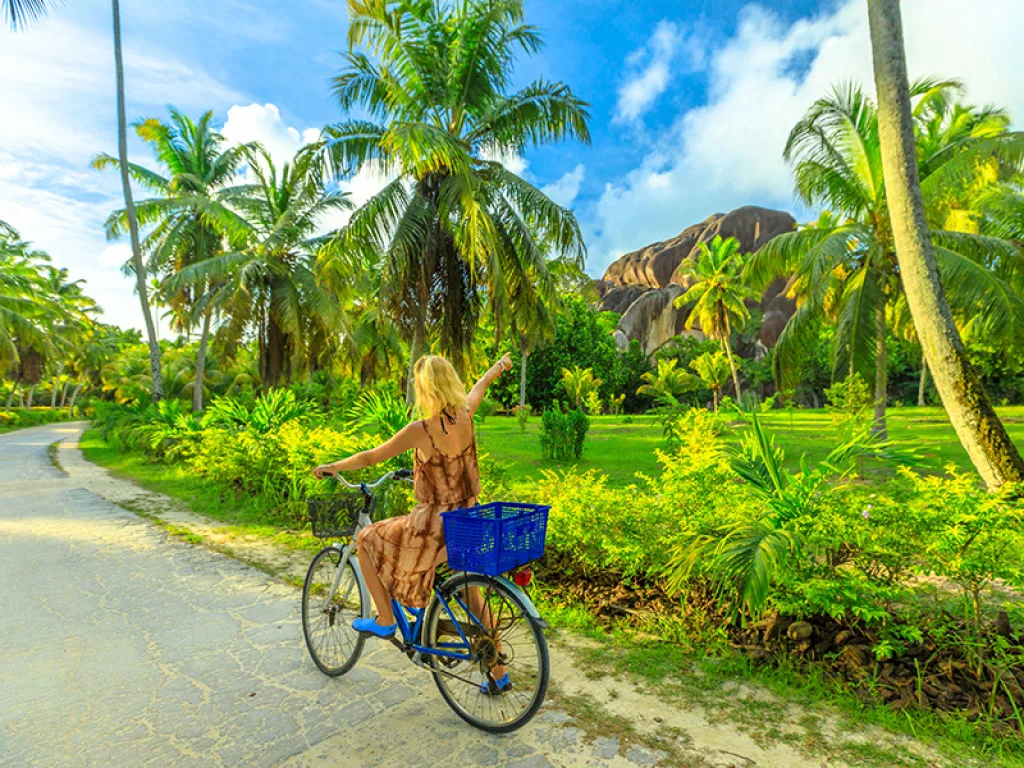
What are your organisation’s current goals?
SF: The Seychelles Tourism Board’s goals are to continue to provide leadership and a sense of direction as we navigate the challenges posed by the COVID-19 pandemic. We endeavour to remain tactical and light on our feet, as we leverage our resources to the best effect by identifying the new markets and trends that will help to inflate the number of tourists travelling to our shores.
Are there any interesting projects in the pipeline you wish to highlight?
SF: In line with our sustainability label, STB will be launching the Global Impact Network. This is a platform developed by a group of young entrepreneurs with the aim to allow anyone, but of course here we are targeting primarily visitors, to post their experiences in the Seychelles. This in turn supports some of the UN’s sustainable development goals and measures in metric terms to analyse how they are positively contributing towards the goal. We are confident that this project will go a long way in supporting and advocating Seychelles’ efforts in sustainability and conservation.
Is the Seychelles Tourism Board capitalising on any current trends in the travel industry?
SF: As a small destination that is heavily reliant on tourism, the Seychelles always has a weather eye on the latest travel trends and how they might be turned to our advantage.
One of the latest examples of this is our Workcation Programme. This has been designed to target a specific travel segment within two categories; those who are employees and the self-employed, falling within the medium to high-income bracket. Local tourism establishments especially hope to use this strategy to attract working professionals for long stays, using the Seychelles as a home office destination whilst on holiday.
With regards to sustainability, STB is partnered with the Seychelles Sustainable Tourism Label. For a country and tourist destination such as the Seychelles, sustainability ensures our future by mainstreaming sustainable practices that enable us to protect the environment whilst also crucially underpinning our attraction as a tourism destination.
I understand that you have developed a travel guide smartphone app – could you tell us a little bit more about this? Has it been popular?
SF: This was developed some years ago in response to a perceived need for our tourists to have access to a virtual tour guide and access to real time information to enable them to make immediate choices. In general, this continues to be well received.
Are you optimistic about the recovery of the tourism industry in the Seychelles?
SF: As optimistic as I can be. Many of the controlling factors of the COVID-19 situation remain beyond our control. However, the signs are promising so far that, gradually, we will be able to reclaim our industry.
Finally, where is your personal favourite spot on the islands that you would recommend to tourists?
SF: The problem is that I have so many favourite spots: from the viewpoints overlooking our wide expanse of emerald forest and sapphire ocean to any one of our world-beating beaches. We are spoilt with our wonderful choice of island resorts and a spectacular network of walks and hiking trails that allow visitors to discover our wealth of rare flora and fauna.
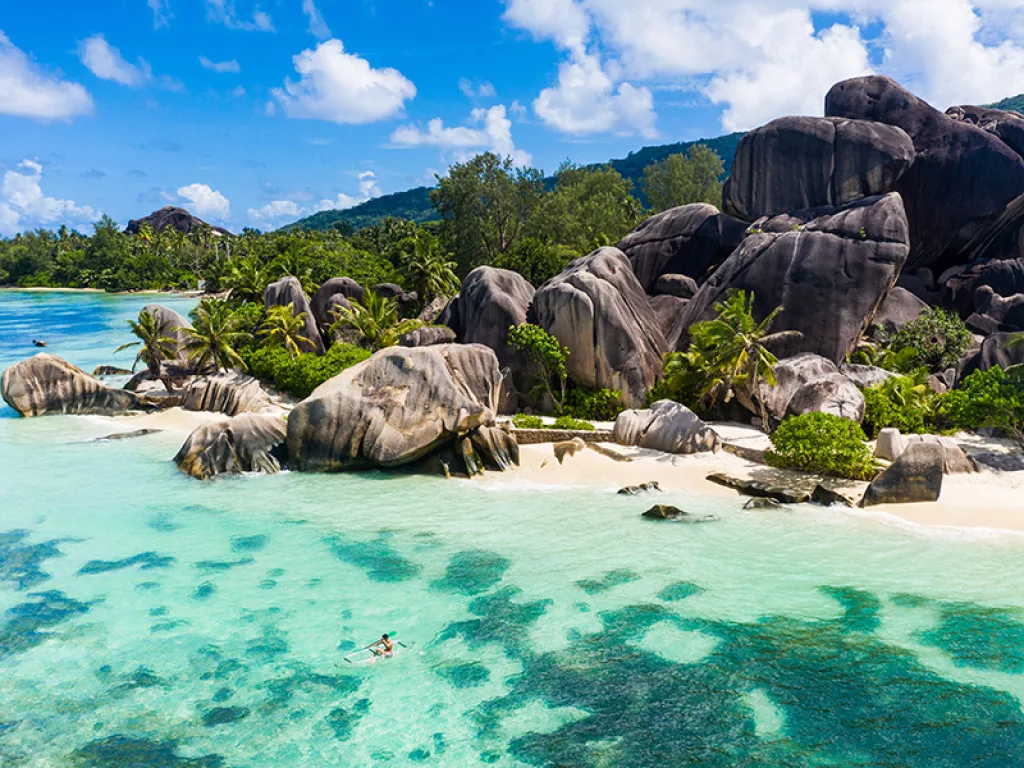
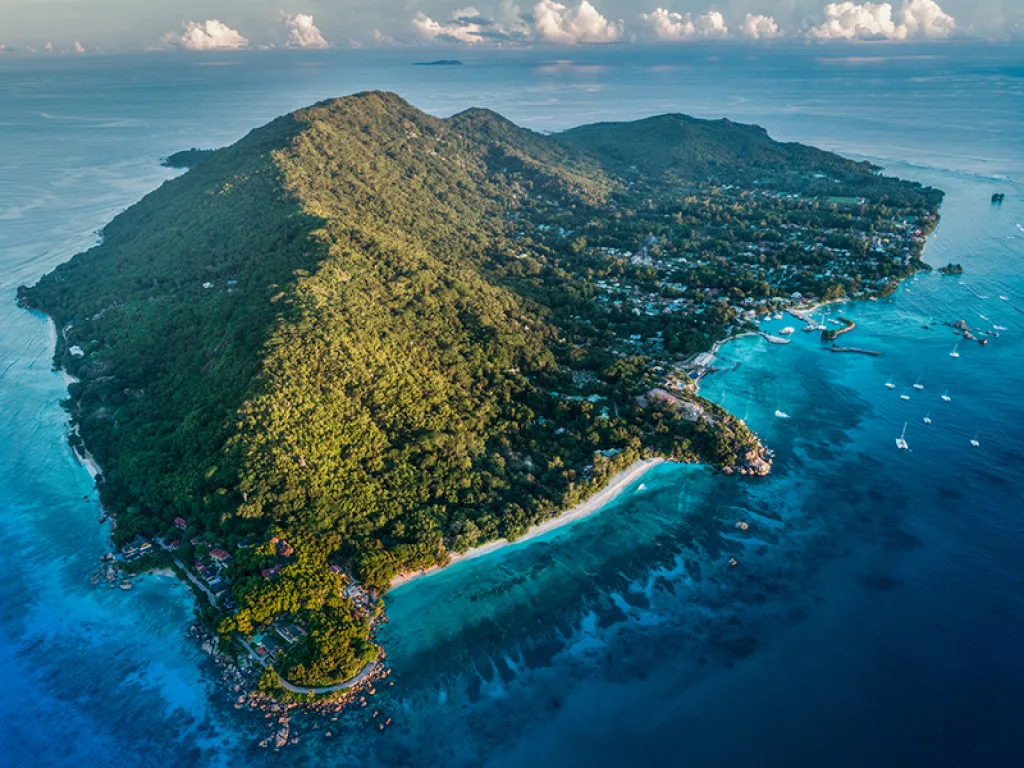
OUTLOOK RECOMMENDS
Eat:
For Creole cuisine in an historic location…
Marie Antoinette’s Restaurant – the Seychelle’s oldest restaurant is set in a colonial Seychellois mansion, delivering authentic Creole cuisine in this historic Victoria hotspot.
Do:
Contribute to conservation – Blue Safari Seychelles offer the chance for guests to get involved with several conservation initiatives. Roll up your sleeves and contribute to the preservation of the Seychelles through beach clean-ups, turtle patrol, and observing the Manta Rays.
Submarine Exploration – Bookable via Viator, take a semi-submarine tour through Saint Anne National Marine Park. Departing from the aptly named Eden Island, enjoy an unbeaten view of the island’s marine life and vibrant coral reefs from an underwater cabin.
Charter a luxury yacht– Cruise your way through the islands on-board a pedigree vessel with luxury amenities at your disposal. Safe in the hands of an experienced Captain and exceptional crew, a selection of charter packages are bookable via Ocean Independence. Cruising season from November through to April.
Sleep:
For a private beach retreat….
La Digue Island Lodge Hotel – Sample authentic Seychellois hospitality with island style accommodation.
For a family-friendly eco-escape…
Les Lauriers Eco Hotel and Restaurant – Family run and environmentally friendly accommodation in Northern Praslin.
LA DIGUE IN FOCUS
As the Seychelles’ third-most inhabited island, and just a 15 minute ferry ride away from the paradisiacal shores of Praslin, the teardrop-shaped island of La Digue warrants a visit from any traveller to the Seychelles. Offering an idyllic snapshot of Seychellois island life, here, only a handful of cars are permitted and you may wander barefoot along sandy roads where giant tortoises are likely to be the only traffic. Just one road snakes around three quarters of the entire island.
Many choose to explore La Digue on two wheels, cycling to the most renowned beach of Anse Source D’Argent or wandering on foot to Anse Marron – a worldwide favourite. Offering a series of breath-taking bays, beaches are the primary draw here. Swimmers may luxuriate in the turquoise waters on the boulder-strewn shores of Petite Anse in the Southeast, whilst the island’s West Coast offers beaches sheltered by coral reefs that promise calm seas perfect for snorkelling. The more active beach lovers may prefer to horse ride, fish, or take boat trips around the island.
Inland, the wooded La Digue Veuve Reserve is a bird sanctuary boasting a healthy population of the endemic black Paradise Flycatcher. Visitors interested in the island’s historic coconut farming industry may visit the L’Union Estate coconut plantation whilst La Digue’s hilly interior offers meandering hiking trails navigating thick jungle. Hikers should venture up to the promontory at Pointe Petite Anse, offering astonishing ocean views across to the Ramos National Park and the miniature islet of Félicité. Infrastructure is limited here and mainly prominent in the laidback port towns of La Réunion and La Passe where Creole cafés offer local cuisine and relaxed ramshackle style eateries.
LANDMARK ATTRACTIONS
Aldabra Islands
The large, uninhabited island of Aldabra, within the Aldabra Group is the world’s largest raised atoll, surrounded by a shallow lagoon. Naturally protected by a coral reef and preserved from manmade interference by UNESCO, Aldabra boasts the world’s largest population of giant tortoises with numbers in excess of 152,000. Embark on a cruise to observe these ancient creatures and learn about local conservation efforts at the research station.
Morne Seychellois National Park
This vast National Park covers over 20 percent of Mahé’s land area and comprises a mixture of terrains including coastal mangroves, rugged mountains and an extensive trail network snaking through dense jungle and indigenous forest. The pinnacle of Mahé’s mountainous interior can be reached at Morne Seychellois (905 metres), the country’s highest peak. Encounter fantastically rich ecosystems and keep your eyes peeled for endlessly impressive native flora and fauna, including the world’s smallest treefrog.
Anse Lazio
In the northwest of Praslin, you will find what is widely regarded as one of the world’s best beaches. This is quintessential Seychellois escapism at its finest, with granite boulders bordering one end of the bay and white sands fringed by a thick curtain of swaying palm fronds and tamakata trees. The idyllic backdrop opens out to a deep bay, unprotected by coral reefs, although perfectly suitable for bathing.
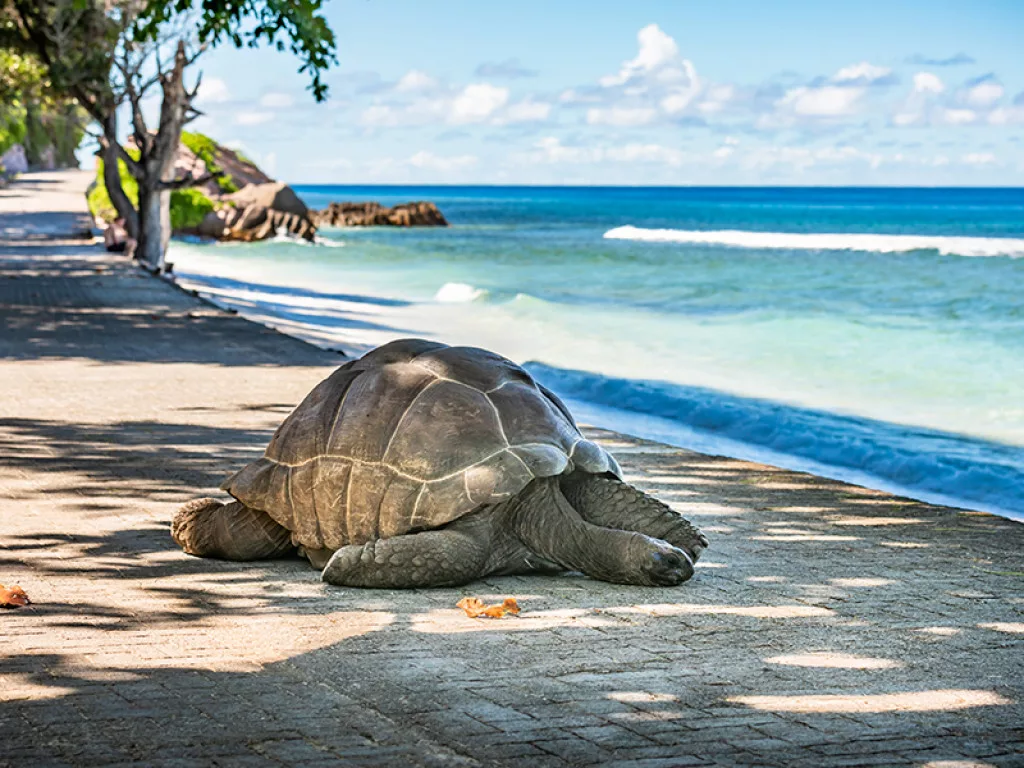
GETTING THERE AND AROUND
All international flights to Seychelles arrive and depart from Mahé in Victoria (SEZ). Getting to the islands is relatively simple – it’s getting around them that can be half the experience!
Inter-island flights are available between Mahé and Praslin with a reliable scheduled service from Air Seychelles. Charter flights are the only option to reach other islands by air. The most popular choice is to travel by boat, with fast passenger vessel services running between Mahé, Praslin, and La Digue. Other ferry services and catamaran crossings operated by Cat Cocos are also available. If travelling in high season, we advise booking your crossing in advance online.
Those based on the larger islands of Praslin or Mahé may consider car rental for unparalleled independence, and this can often prove cost-effective if staying more than a few days. On both islands, the road network is in good condition, meaning that extensive bus routes are also available. Alternatively, we highly recommend bike rental for laidback island exploration whilst staying on La Digue. This is typically available through your accommodation.
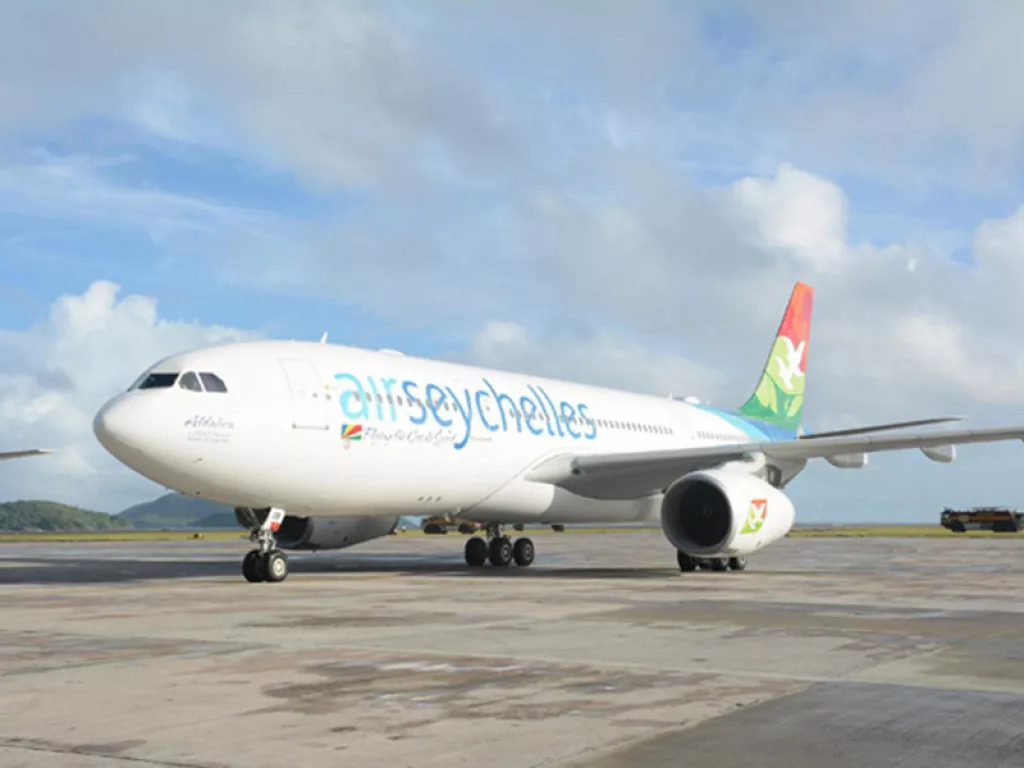
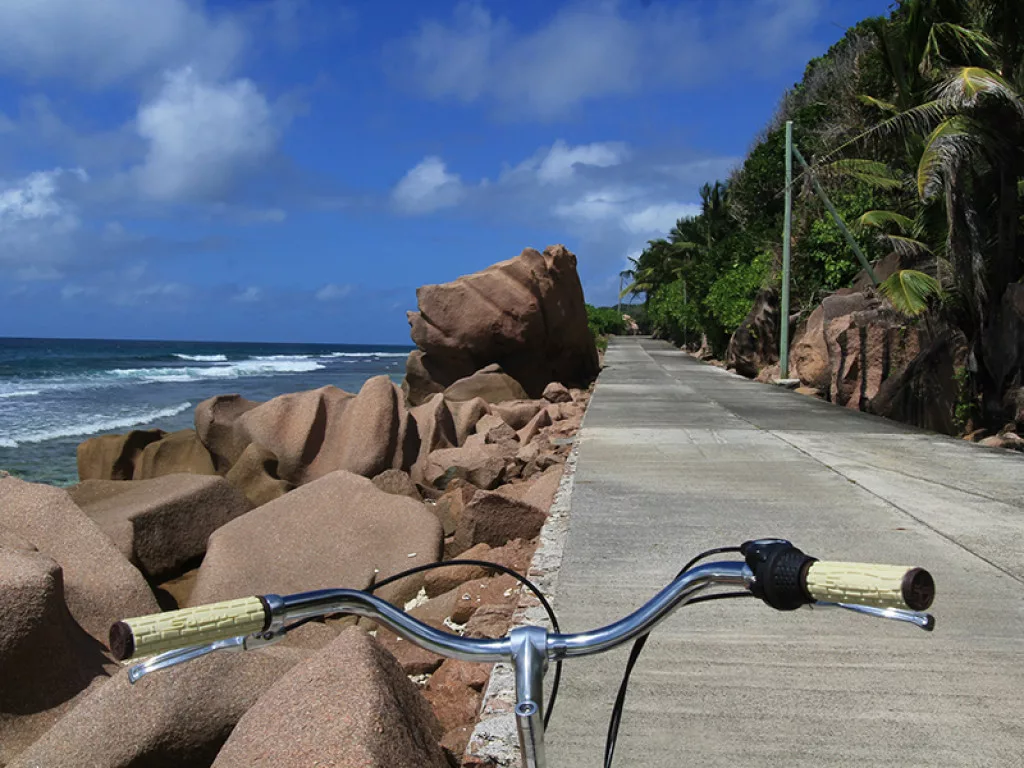
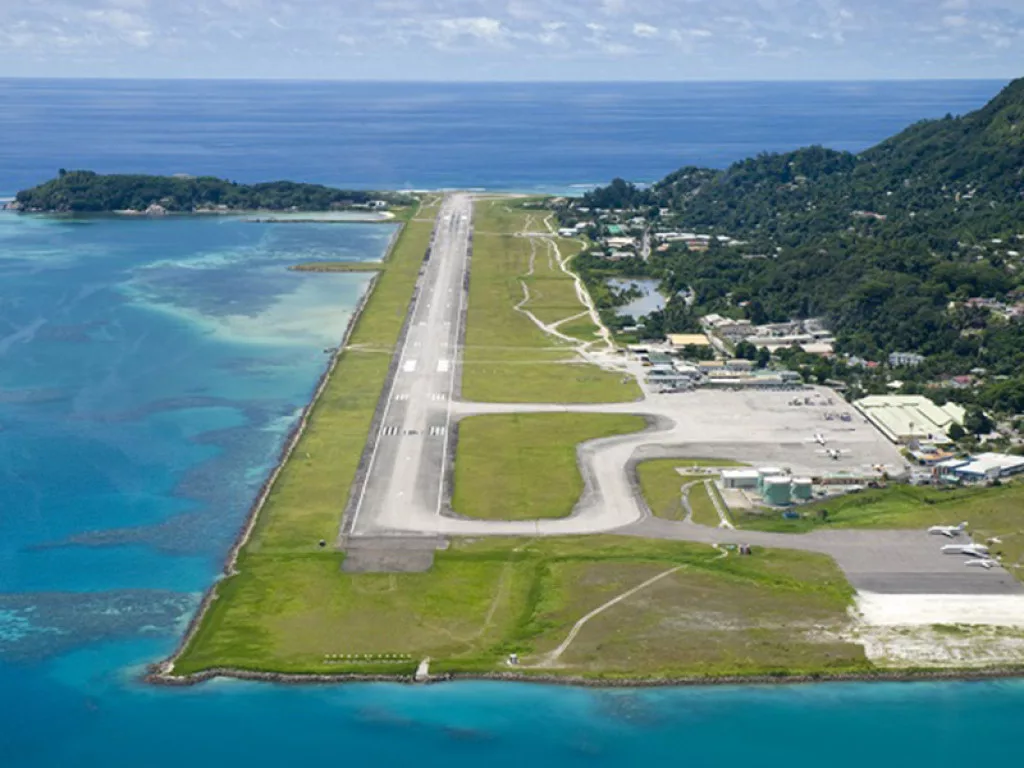
ALPHONSE ISLAND: A HAVEN FOR ECO-TOURISM
We shine a spotlight on Alphonse; the island that may be small in size but is big on sustainability. For burgeoning eco-warriors and mindful travellers, this is one for the bucket list.
Located in the remote Outer Islands of the Seychelles, some 400 kilometres southwest of Mahé, the tiny island of Alphonse has earnt itself a name as a leader in eco-tourism. Flying the flag for sustainable travel, Alphonse is part of the prestigious Blue Safari Seychelles portfolio. Blue Safari embody the philosophy of combining sustainable travel with high-end accommodation, ensuring their clients can enjoy memorable holidays and worthwhile experiences, without comprising on service.
Renowned as a gem in the archipelago’s crown, Alphonse has the untouched feel of an undiscovered Eden. Yet, as with eco-systems worldwide, there is a fragility here that demands protection. As such, the island has implemented an array of environmental procedures to preserve its delicate habitats, whilst promoting and educating guests regarding wider sustainability practices.
Nature-based Experiential Travel
On Alphonse, you are spoilt for choice with enriching and immersive experiences suitable for all the family. Adventure activities include snorkelling, scuba diving, turtle hatching and fly-fishing to name just a few. For conservation enthusiasts, from May to September 2021, you can partake in the ‘Explorer Season Conservation Experience’. Encompassing a range of conservation projects, this offers unparalleled insight into the island’s ecology, with beach clean-ups, tree planting, turtle monitoring and underwater wildlife photography all run by a dedicated team of environmentalists and marine biologists.
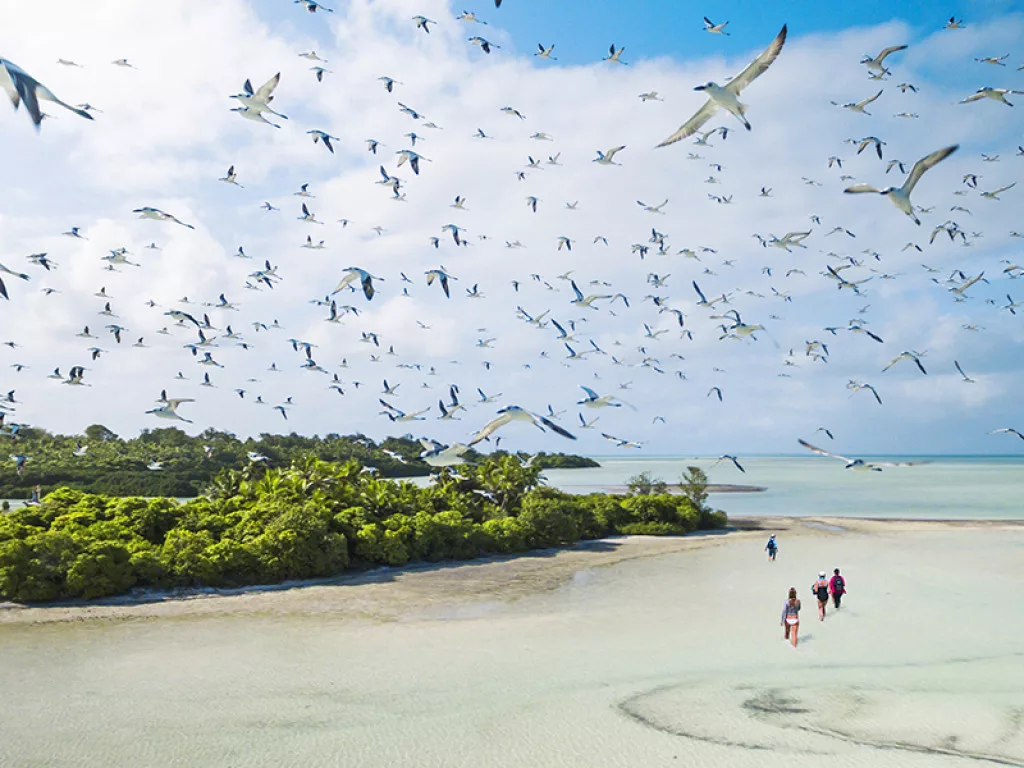
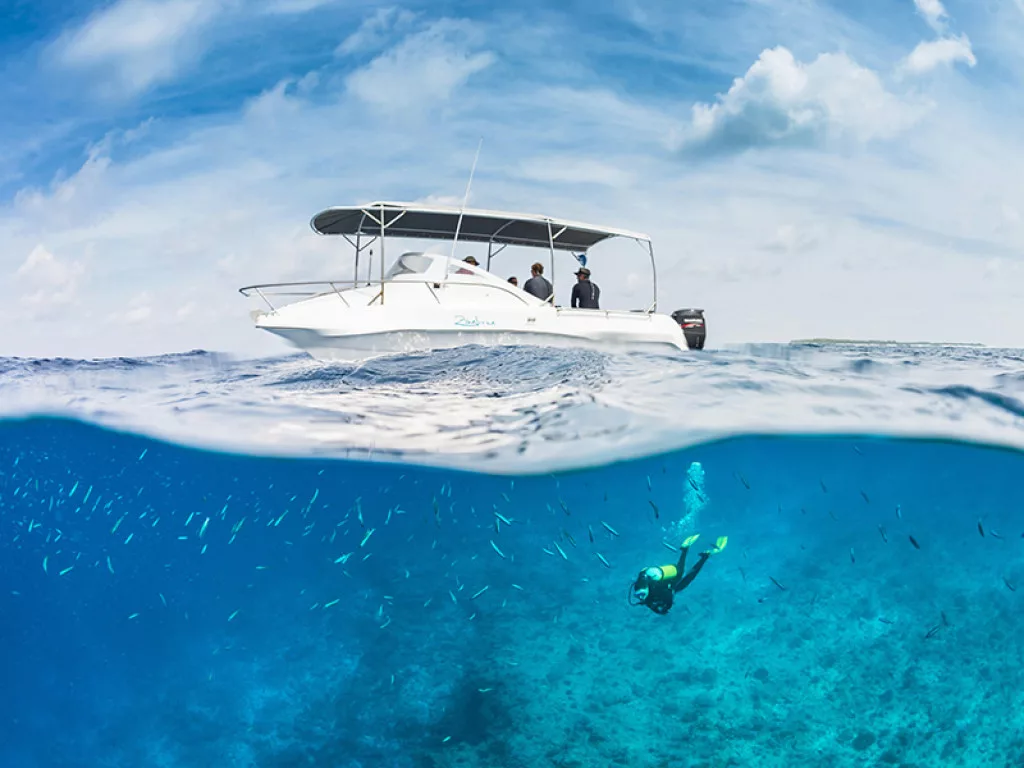
Self-Sufficient Farming
Remarkably, the entire island is reliant on a vegetable garden that produces a staggering average of 2.5 tonnes of fresh produce each month. This self-sufficient farming has prevented around 30 metric tonnes of CO2 from being released each year via air miles, excluding the reduction of countless other emissions released from overland refrigerated haulage and processing factories in the commercial food industry. The chefs on the island’s sole resort are experts in curating menus from this produce.
Indeed, 65 percent of the fresh produce consumed across the islands and atolls in the Blue Safari Seychelles portfolio are sourced directly from the farm on Alphonse Island- including lemongrass, tamarind, curry leaves, coriander, mint, basil and parsley. Organic salad ingredients such as rocket – a notoriously difficult plant to grow in the tropics – are grown in the garden, ensuring zero-kilometre food miles and a farm to fork ethos is adhered to. Celebrating the best of Seychellois cuisine, the traditional Creole menu also uses fresh fish that has been caught daily in local waters with zero imported shellfish. By joining a garden tour, guests can start the day on the right track with a hand-picked smoothie.
Renewable Solar Power
In 2018, the Seychelles’ largest solar farm was installed on Alphonse Island, earning Blue Safari the status of the Outer Island’s first hospitality group to operate on solar power. As a result, the island eliminated the use of 268, 000 litres of diesel usage a year, consequently reducing emissions by 718.24 tonnes per annum.
Reduction of Single-Use Plastics
Guests are requested to leave their plastic bottles at home, with Blue Safari providing reusable YETI drinks flasks for the duration of the stay. In an unforgiving tropical climate, some plastics are unavoidable, yet eco-friendly alternatives are implemented wherever possible, such as biodegradable cling film. Sustainable in-room toiletries are designed to minimise plastic supply and guests are provided with handmade cosmetic products from a cruelty and plastic-free local brand.
Eco Conscious Cleaning
Alphonse Island has reduced the use of environmentally destructive cleaning products by using Innuscience products – 100 percent biodegradable cleaning solutions that use microbial action to break down dirt. Automatic refill stations around the island ensure that single-use cleaning bottles and plastic usage is kept to a minimum.
On Alphonse, your accommodation comprises beach bungalows, suites and villas surrounding the central lodge building. Visitors here can expect to leave not just with the treasured memories that accompany any holiday, but also a renewed appreciation and respect for the delicate ecosystems of our planet.
